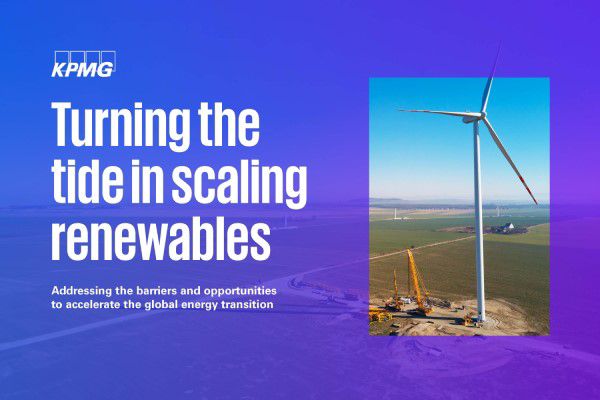The renewable energy industry has experienced impressive growth over the past decade. In 2022, renewable energy deployments grew by double digits worldwide.1 However, only 14 percent of all energy use currently comes from renewable sources.2
Renewable energy is estimated to make up 77% of the world's primary energy supply by 2050.3 To achieve this target, the deployment of renewable energy must triple from 2022 levels by 2030, which amounts to an annual addition of 1,200 gigawatts.4
What are the prospects for the global renewable energy industry to bridge the gap and deliver the desired speed and scale of growth by 2050?
As it stands, renewable energy developers, investors, utilities, and other stakeholders are currently facing too many barriers to reach this level of growth. Over 84% of industry executives reported substantial delays and, in some cases, even project abandonment due to current market challenges.5
Bridging this gap is not a one-size-fits-all solution. To accelerate renewable energy deployment, the industry must confront and overcome the obstacles that stand in its way.
That is the aim of Turning the tide in scaling renewables. In this report, the KPMG global organization and renewable energy specialists identify ten key barriers hindering renewable energy scaling and present innovative recommendations. The report offers real-world examples of organizations overcoming these barriers and succeeding. It also provides insight into increased renewable energy investment opportunities and the importance of collaboration and partnership in delivering successful renewable energy projects.
How the key barriers to energy access in Africa impact energy companies activity (production, distribution and commercialization)?

The main barriers to energy access in Africa stem from aspects such as the lack of access to energy transmission and distribution networks to connect production centers to consumers, affecting the supply chain. While production plants need to be connected to the grid, consumers can only access energy if there are transportation and distribution networks that adequately cover the territory.
The viability of investments to supply remote or sparsely populated areas often depends on technological innovation and innovative distribution systems such as distributed generation, the use of renewable sources and storage solutions.
The reliability of grids and generation plants is critical for an uninterrupted energy supply. Maintenance failures, whether due to lack of investment or suitable technicians, or the absence of redundancies in the event of failure, affect all companies in the sector.
The energy sector is capital-intensive, the construction of power generation plants and transmission and distribution networks requires very significant investments, so access to capital is crucial to making the necessary investments.
Investors favor stable political and regulatory environments that provide medium and long-term visibility. Volatile and inconsistent or highly bureaucratized environments create uncertainty and operational difficulties that affect the ability of production and distribution companies to plan and implement investment projects. In addition, the remuneration regime and costs associated with distribution and commercialization activities are critical for these companies to be able to decide to invest in the extension of their network and commercial offers to customers.
Finally, for commercialization companies and in order to mitigate the credit risk associated with populations with low purchasing power, the ability to implement creative pricing models is crucial to democratizing energy access.

Explore the barriers to scaling renewable energy
Throughout this website, “we”, “KPMG”, “us” and “our” refer to the network of independent member firms operating under the KPMG name and affiliated with KPMG International or to one or more of these firms or to KPMG International.
1 Energy Institute in partnership with KPMG and Kearney. “2023 Statistical Review of World Energy.” 2023.
2 Energy Institute in partnership with KPMG and Kearney. “2023 Statistical Review of World Energy.” 2023.
3 International Renewable Energy Agency. “World Energy Transitions Outlook 2023.” 2023
4 International Energy Agency. “Renewable Energy Market Update: Outlook for 2023 and 2024.” 2023.
5 KPMG International. ‘Turning the tide in scaling renewables.’ 2023.


